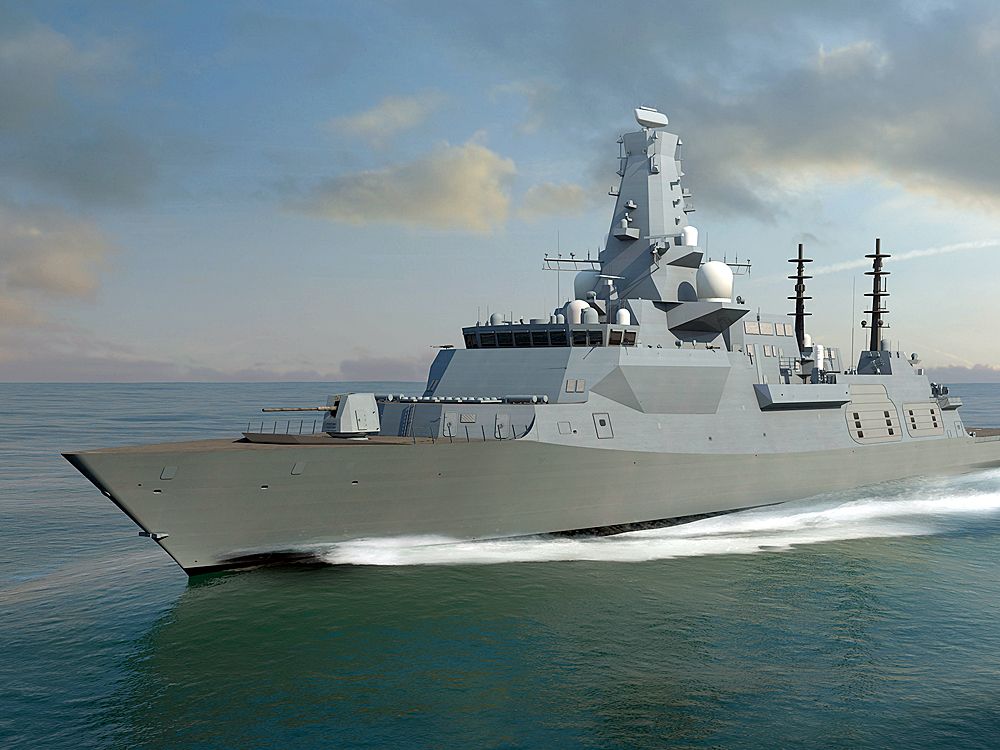There will likely be consideration given to the acquisition of SM-3s for BMD, not so much for need but to appease US concerns that Canada isn’t doing enough for NA air defence which is true. With all the new missiles under development, the RCN will be closely monitoring progress.
The two new warships are planned to combine a development of the Maya class hull with the AN/SPY-7 Long Range Discrimination Radar.

www.thedrive.com
After cancelling their SPY-7 Aegis Ashore, it seems Japan is considering building new Aegis destroyers using SPY-7 for the BMD role since they've already partially paid for the SPY-7 arrays. If Japan goes ahead with this and shoulders the developmental costs of integrating SPY-7/SM-3/Aegis on a ship-based platform, that would definitely make it easier for Canada to add a BMD capability to the CSC.
From some of the comments coming from the RCN over the last while on the CONOPS of these frigates I would say it's likely that each will have a similar load out. The RCN talks about importance of these ships being multi-role; only having 3 of the previous Iroguois class was a significant vulnerability and limitation for the RCN. As already mentioned in this thread they have purposely gone away from having dedicated AAW specific hulls.
These frigates will spend a lot of time in far away places and the RCN wants the ability to send any of the 15 hulls into whatever situation / crisis that comes along - they don't want to shuffle frigates half way around the world to make sure the have the right capability for each threat that they may face.
I believe a lot of the concerns with the Iroquois/Halifax-class split was with the ships themselves, where they were role specific in the fitted systems which couldn't be changed easily, and the knock-on limitation of only having 2 Iroquois on the Atlantic coast and 1 on the Pacific coast for Naval Task Group Commander and AAW roles. Those limitations are addressed by having all CSC be large ships able to embark a Command staff and having 32 strike-length VLS, but I don't believe that means role-specific tasking and loadouts are going to be eliminated.
It's true that Canadian navy frigates are often deployed for independent patrols, perhaps occasionally joining other ships for brief group exercises, where a general purpose/multi-role missile loadout is appropriate. However there will still be times where an AAW-loadout is appropriate such as when a frigate serves as Naval Task Group Commander for a Canadian Naval Task Group where she'll probably stay in the center with the JSS which needs protection, as Commander for a Standing NATO Maritime Group where ships from other navies might have less-effective AAW capabilities, or when she joins allied carrier battle groups and is assigned inner layer protection close to the carrier. These roles are generally known, planned for, and specifically trained for in advance, are of long-duration (for example I believe SNMG Commander is a 6-month role) and aren't likely to change in the middle of a deployment (I believe Canadian frigates deployed as a general member of SNMG have sometimes had to unexpectedly leave to serve other immediate Canadian needs, but I don't believe that's happened when the frigate is the SNMG Commander), so a multi-role missile capability isn't as necessary in those cases. And with 8 x NSM, a 127mm gun, torpedo tubes, and a Cyclone helicopter, even a CSC dedicated to AAW retains anti-ship, land-attack, and ASW capabilities.
The RCN tries to maintain a 1:1:1 ratio of ships in high-readiness (which I believe means deployed on missions), normal-readiness (which I believe means workups and can include lower intensity exercises with allies), and extended readiness (just returned from missions or refit) so at any one time I could see 1-2 high-readiness CSC with an AAW-loadout (perhaps 24 x SM-2, 32 x ESSM, 24 x CAMM), 3-4 high-readiness CSC with a multi-role loadout (perhaps 16 x Tomahawk, 8 x SM-2, 32 x ESSM, 24 x CAMM), 5 normal-readiness CSC with the multi-role loadout but half the missiles being warshots and half being training rounds although some empty VLS wouldn't be surprising, and the 5 extended readiness ships would of course be unarmed. For SM-2, that would mean up to 92 warshots are deployed at one time.





